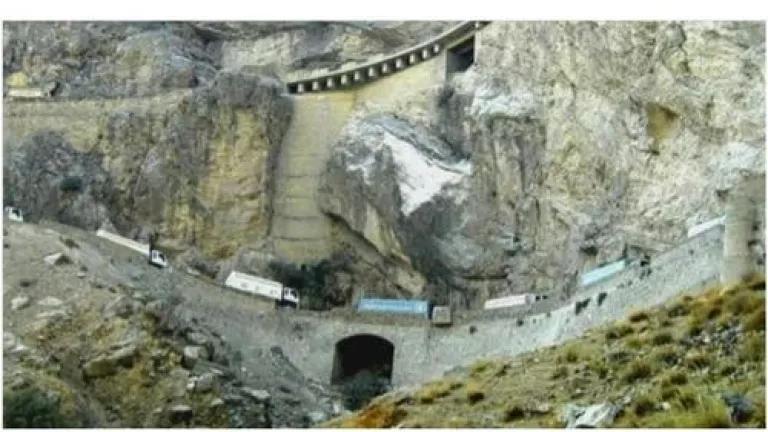Military moves ahead on smart energy investments - and there's "not a shred of political correctness" to it

Last month, the U.S. Army announced the opening of a 30,000-square foot research facility in Michigan for developing fuel cells, hybrid systems, battery technologies and advanced alternative fuels for the next generation of vehicles. Under Secretary of the Army Joseph Westphal described the benefits of the lab in his dedication speech:
The work done [here] will make our Soldiers’ loads lighter, reduce their energy requirements, and reduce the number of Soldiers we put into harm’s way to supply energy. This facility will not only make us more efficient and save resources, but will save lives in combat as well.
This sounds like (and is!) a win-win for the military and the planet, but some people aren’t happy. Recently, critics in Congress have tried to discredit the military’s energy initiatives, claiming that the Department of Defense is succumbing to a green fad, or even trading favors with clean energy businesses. Critics wrongly allege that our military’s investments in clean energy and energy efficiency are undermining national security.
The facts do not support these allegations.
Above, fuel convoys on slow roads in Afghanistan make an easy target. Source: Lt. General Steven Anderson presentation (here)
There is strong evidence that the military’s efforts are saving lives, saving money and improving mission effectiveness. I have blogged here, here, and here about the military’s leadership on climate, efficiency and clean energy action, and why it makes sense for DoD, the nation’s largest energy consumer, to make these investments. Here’s a quick glance at how the military’s smart energy policy is making things better already on the battlefield and in the budget:
- The Navy alone uses 30 million barrels of oil per year. When oil climbs just $1 per barrel, the Navy is charged an extra $30 million. This year’s price spike is going to cost the Navy $1 billion unplanned for. In response to these uncertainties, President Obama, with strong support from military officials, has proposed doubling the Department of Defense’s efficiency spending to $1 billion in his budget for 2012. This is a smart policy recommendation that should be supported by practical thinkers on both sides of the aisle.
- On the ground, meanwhile, the Pentagon spends $20 billion a year air conditioning tents and other temporary buildings in Iraq and Afghanistan. The tab is more than NASA’s entire budget! The service, of course, is an absolute necessity—our soldiers deserve a good night’s rest after carrying 80 pounds of gear all day in 120 degree weather. However, the voracious appetite of our inefficient generators requires nearly continuous shipments of diesel by way of highly dangerous ground convoys. It takes 18 days to drive fuel from Karachi, Pakistan to our bases in Afghanistan on slow-moving roads—an easy target for enemies and thieves—at an average cost of $30/gallon for each shipment delivered. In some years, these convoys are responsible for as many as one third of battlefield casualties, or 1 soldier for every 24 shipments, and have cost 1,300 American deaths already in Iraq and Afghanistan in 10 years. Yes, you read that correctly: 1,300 Americans killed transporting fuel. In one year alone, 2010, we lost 47 fuel convoy drivers. An investment of $95 million in spray-foam insulation for tents in Iraq and Afghanistan is expected to save $1 billion—as well as many soldiers’ lives. We need more of this.
- Finally, thanks to a tiny investment last month of $2 million in portable solar, the Navy Seals will soon be able to power up along the way, purify water, and even refrigerate medical supplies and provisions. This will improve the Seals’ self-sufficiency and further reduce the need for dangerous convoys to remote outposts.
These investments are common sense. Vice Adm. Dennis McGinn (ret.) stated bluntly to Scientific American last month that “There is not a shred of political correctness in what the military is doing with energy efficiency or renewable energy.” Or, as Navy Secretary Ray Mabus puts it: “we’re doing this for one reason—to be better war fighters.”
Detractors tend to focus on high upfront costs of developing new technologies. True, R&D can be expensive—but can you imagine where we’d be today without the military’s investment in creating GPS, the internet and microchips? And, at another angle, these investments provide an important economic stimulus when we need it, with wide-reaching and very positive impacts across the civilian population. DOD’s commitment to making bases and vehicles more efficient and toward advancing new energy generation, storage, transmission and alternative fuels technologies is creating jobs and economic opportunity.
Please stay tuned for more about these and other exciting developments underway at the Department of Defense.
